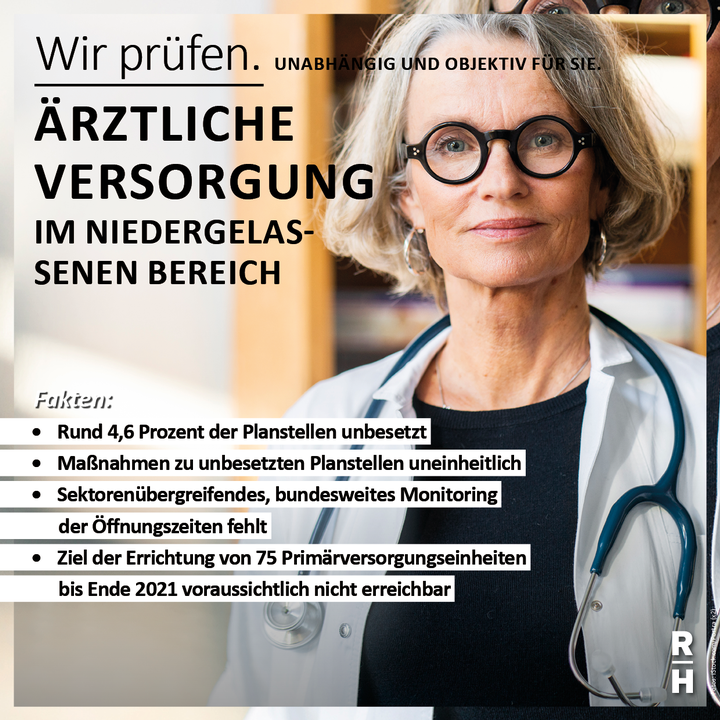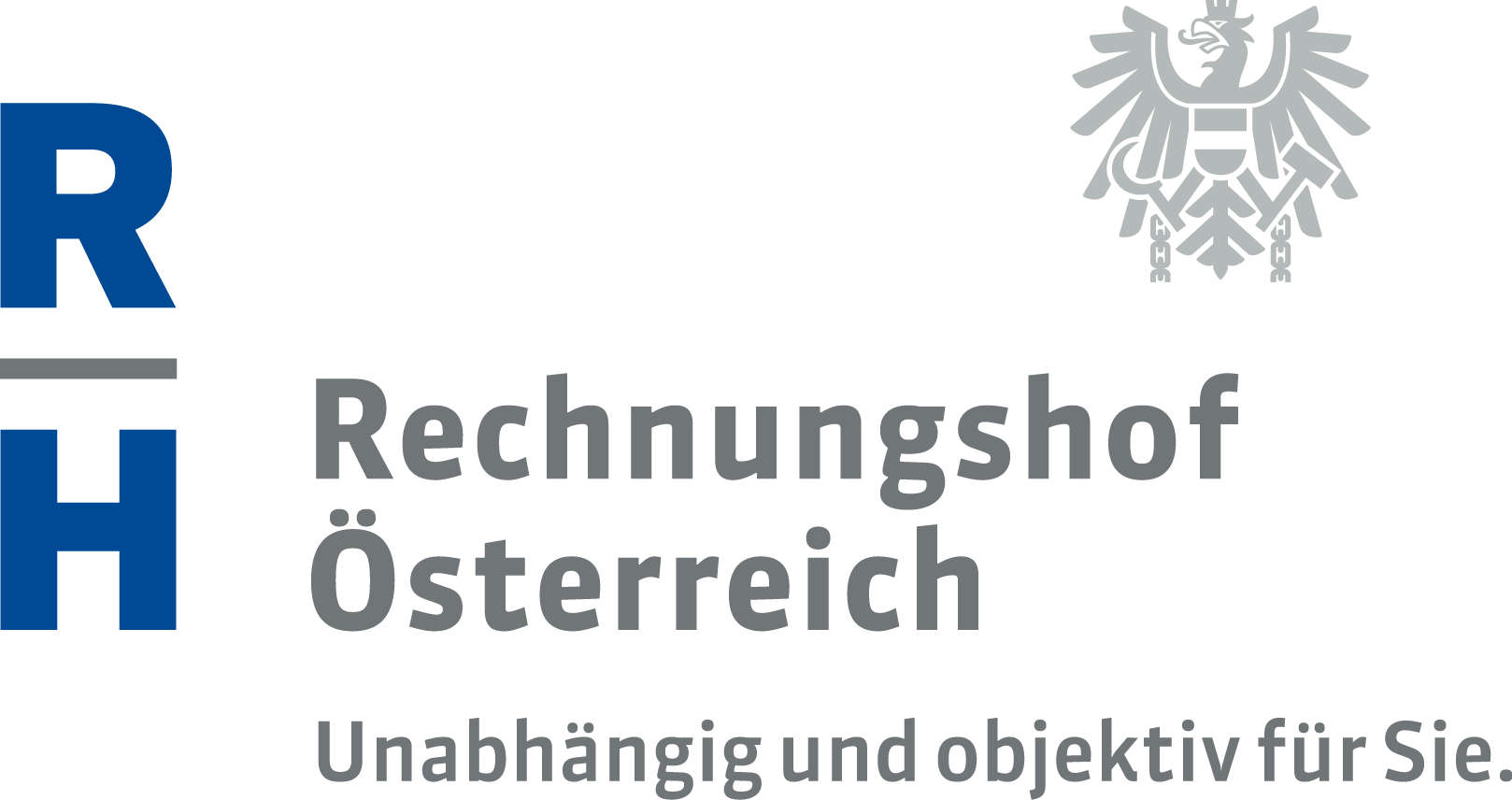Audit request: medical care

In March 2019, the Austrian Medical Chamber called for 1,300 additional posts for physicians under contract with the Austrian Health Insurance Fund (contract physicians). Based on a decision of the National Council, the Austrian Court of Audit (ACA) carried out an audit on the "Medical Care in the Independent Healthcare Sector" and published the corresponding report today. The ACA considers the data – by the Federal Ministry of Health, the health insurance providers, the Main Association of Austrian Social Security Institutions and the Austrian Medical Chamber – as inadequate to give a valid overview of the medical services in the independent healthcare sector: for example, the indicated number of independent health practitioners did not include the cooperation of several practitioners in group surgeries. The indicated number of practitioners did not contain the extent of their activities. Furthermore, an informative, chronological comparison of the opening times was not available for the audited period.
The audit essentially spanned the years from 2013 through 2019.
In its report the ACA notes the following: At the time of the audit, an overview of the vacant posts broken down by medical field and region was available only to a limited extent. According to the Federal Ministry of Health, a reference day assessment conducted in April 2019 resulted in 70 vacant posts for general practitioners in Austria. The result was similar as regards medical specialists. Only a few posts remained vacant for a longer period of time.
The vacant posts are, on the hand, those that are kept unfilled – e.g. for group surgeries – and, on the other hand, those that remain vacant because, for example, no applicants have responded to an announcement.
Due to the lack of data, the ACA ascertained the filled and vacant posts as at end-2019 together with the Austrian Health Insurance Fund and presented them in a uniform format. This survey showed that of 7,142.4 posts 138.3 – namely about 1.9 per cent – were left vacant in Austria as at end-2019. 189 posts (some 2.6 per cent) could not be filled despite the planning. Overall, the percentage of unfilled posts was at some 4.6 per cent.
The Austrian Health Insurance Fund shall develop strategies for the filling of posts
The low number of entrants to the profession or the brain drain of physicians may be some of the causes for unfilled posts. According to the Federal Ministry of Health and the regional health insurance providers, the filling of posts in structurally weak and less populous regions is particularly difficult.
The ACA acknowledges that the regional health insurance providers and the Austrian Health Insurance Fund took various measures in order to render unfilled posts more appealing: in some cases, the regional health insurance providers allowed for alternative locations and made a joint application of several part-time staff members possible. Moreover, they endeavoured to find alternative forms of care to provide medical services to the population in cases of long-term vacancies. By renewing the contracts of physicians, the regional health insurance providers allowed, for example, for the continued operation of surgeries also after the respective physicians have reached the age limit.
The auditors, however, highlight that the measures taken are inconsistent. The ACA therefore recommends to the Health Insurance Fund to develop a strategy for the filling of posts, to devise targeted measures to this end (such as rendering the framework conditions more flexible) and to apply them based on regional needs.
The actual opening times should be recorded
In January 2020, the Main Association of Austrian Social Security Institutions stated that the opening times should be monitored throughout Austria and across all sectors – i.e. both contract physicians and outpatient clinics – and that such monitoring should be complete and made on a daily basis. The ACA criticizes that a monitoring of the opening times that would meet all requirements of the Main Association was lacking at the time of the audit. Furthermore, neither the regional health providers nor the Federal Ministry of Health could present a systematic survey of the needs of patients.
The ACA recommends to the Federal Ministry of Health and the Austrian Health Insurance Fund to ensure a recording of the actual opening times of contract physicians and outpatient clinics throughout Austria and across all sectors.
The defined target value of primary care facilities will probably not be reached by end-2021
In 2013, the Federation, the provinces and the social insurance institutions defined the objective of ensuring a full-scale implementation of primary care as “a general and directly accessible first point of contact for persons with health problems in the spirit of a comprehensible basic care”. In this way, a coordinated care process as well as a holistic and continuous provision of medical services was to be guaranteed.
By end-2021, at least 75 primary care facilities were to be established in Austria. This equals the provision of medical services for five per cent of the population in this particular form of care. However, of the 75 primary care facilities to be established by end-2021, only 16 had been implemented in December 2019. Furthermore, the auditors critically note that, in the audited period, no primary care facilities were operational in Carinthia, Salzburg, Tyrol and Vorarlberg.
According to the ACA’s view, the objective of establishing 75 primary care facilities by the end of this year will probably not be met.
Digitalization as an opportunity for cutting red tape
In the audited years, the contract physicians issued their invoices to the regional health insurance providers in electronic form. In order to render the processing of medical clearances easier, the social insurance providers created several applications via the e-card system: since 2005, for example, contract physicians have been able to electronically request approval for medicinal products that require the approval of the head physician with the “approval service for medicines”. Since 2018, the application “e-medication” provides an up-to-date overview of medicines prescribed and dispensed at the pharmacies. Furthermore, against the backdrop of the COVID-19 pandemic, the social insurance providers adopted several measures to limit physical contact with patients, such as the electronic transmission of prescriptions to pharmacies.
The ACA perceives the increasing digitalization as an important opportunity for cutting red tape.
- pdf Datei:
- 9,415.7 KB
- Umfang:
- 170 Seiten
Report: Medical Care in the Independent Healthcare Sector (in German)
From November 2019 to June 2020, the ACA audited, based on a decision of the National Council, the medical care provided in the independent healthcare sector. The audit was carried out at the Federal Ministry of Social Affairs, Health, Care and Consumer Protection, the Austrian Health Insurance Fund and the Main Association of Austrian Social Security Institutions. The audit aimed at assessing to what extent the framework conditions for medical care have been implemented in the independent healthcare sector – in particular as regards physician density, the remuneration in the area of general medicine and the legal provisions. In this context, the ACA was guided by the legal mandate to provide sufficient medical care as part of medical treatment. The special insurance providers (Social Insurance Institution for Farmers, Social Insurance Institution for Public Sector Employees and the Social Insurance Institution for the Railways and Mining Industry) were not covered by the audit. The audited period essentially spanned the years from 2013 through 2019. Individual findings also related to the period from 2009 through 2012.


